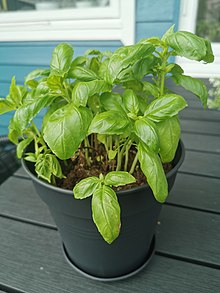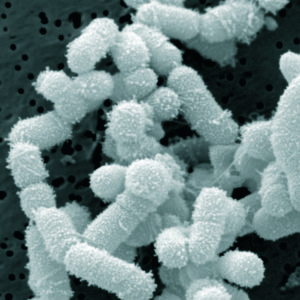
There has been an exciting development in chronic sinusitis research and treatment using the beneficial bacteria Lactobacillus sakei (L. sakei), specifically with the probiotic powder Lanto Sinus. This recent study took a different approach to chronic sinusitis by looking at the immune system.
Researchers conducted a sinusitis study of individuals with chronic sinusitis, all who had undergone multiple sinus surgeries and were considered hard to treat (had continuing problems with sinusitis, thus refractory). The researchers found that using Lanto Sinus (with its specific strain of L. sakei Probio65) had very good results in treating many of the individuals.
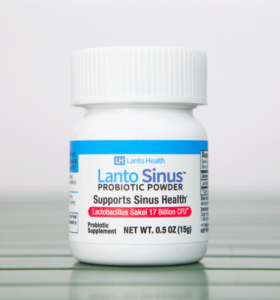
The treatments involved using Lanto Sinus (L. sakei proBio65) as a nasal rinse (1/4 teaspoon of Lanto Health powder in 2 tablespoons of normal saline nasal rinse) once a day and 1/4 teaspoon (240 mg) twice a day in food. This continued until they felt healthy. [IMPORTANT: Stop the use of L. sakei when feeling better.]
The researchers approached chronic sinusitis by looking at the immune system, specifically IL-12, a substance involved with immune system functioning. They found that IL-12 levels can be low in chronic sinusitis sufferers. Using L. sakei raises IL-12 levels, which they thought explained the positive results.
In other words, their thoughts are that microbial imbalances in chronic sinusitis could contribute to IL-12 signaling defects, and this results in low IL-12 levels. Which L. sakei can correct.
How was IL-12 measured in the study? Blood was drawn from each person and a lab analysis was done - called a pSTAT4 phosphorylation assay (which measures immune health related to IL-12).
Next: Now the researchers are starting another study to further look into this. Stay tuned!
Abstract (summary) excerpts from medRxiv (for preprints), and now at National Library of Medicine: STAT4 Phosphorylation of T-helper Cells predicts surgical outcomes in Refractory Chronic Rhinosinusitis
Abstract
Objective: Chronic rhinosinusitis (CRS) impacts an estimated 5% to 15% of people worldwide, incurring significant economic healthcare burden. There is a urgent need for the discovery of predictive biomarkers to improve treatment strategies and outcomes for CRS patients. ...continue reading "Looking at the Immune System in Chronic Sinusitis"

 There are 2 small studies that recently looked at the issue of snot transplants as a treatment for chronic sinusitis. The idea behind snot transplants or sinonasal microbiota transplants is similar to fecal transplants - it's a transplant containing the entire microbial community (fungi, bacteria, viruses) in the form of a sample of snot or nasal mucus from a healthy donor to a recipient with chronic sinusitis (sign of an unhealthy sinus microbiome).
There are 2 small studies that recently looked at the issue of snot transplants as a treatment for chronic sinusitis. The idea behind snot transplants or sinonasal microbiota transplants is similar to fecal transplants - it's a transplant containing the entire microbial community (fungi, bacteria, viruses) in the form of a sample of snot or nasal mucus from a healthy donor to a recipient with chronic sinusitis (sign of an unhealthy sinus microbiome).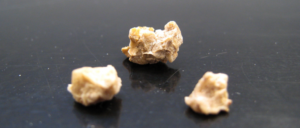


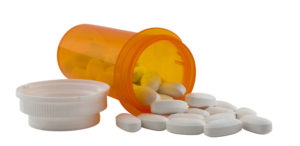 The bacteria Fusobacterium nucleatum is prevalent in periodontal disease (gum disease), but also in some chronic diseases and cancers, such as colorectal cancer. The bacteria F. nucleatum is normally found in the mouth (oral) microbiome, and its numbers increase as periodontal disease inflammation increases.
The bacteria Fusobacterium nucleatum is prevalent in periodontal disease (gum disease), but also in some chronic diseases and cancers, such as colorectal cancer. The bacteria F. nucleatum is normally found in the mouth (oral) microbiome, and its numbers increase as periodontal disease inflammation increases. The microbes living on and in us (the human microbiome or microbiota) play a big role in our health. Certain microbes are even implicated in cancer development and progression. Thus, it shouldn't come as a surprise that new
The microbes living on and in us (the human microbiome or microbiota) play a big role in our health. Certain microbes are even implicated in cancer development and progression. Thus, it shouldn't come as a surprise that new  The incidence of both intestinal bowel diseases (IBD) and colorectal cancer is rapidly increasing in developed countries (e.g., US, Canada, Europe). There are many theories over why this is occurring, with most researchers thinking a person's diet plays a role. A big suspect in promoting IBD and colorectal cancer is the Western diet, which has lots of ultra-processed foods and is also low in fiber.
The incidence of both intestinal bowel diseases (IBD) and colorectal cancer is rapidly increasing in developed countries (e.g., US, Canada, Europe). There are many theories over why this is occurring, with most researchers thinking a person's diet plays a role. A big suspect in promoting IBD and colorectal cancer is the Western diet, which has lots of ultra-processed foods and is also low in fiber. Bottom line:
Bottom line:
